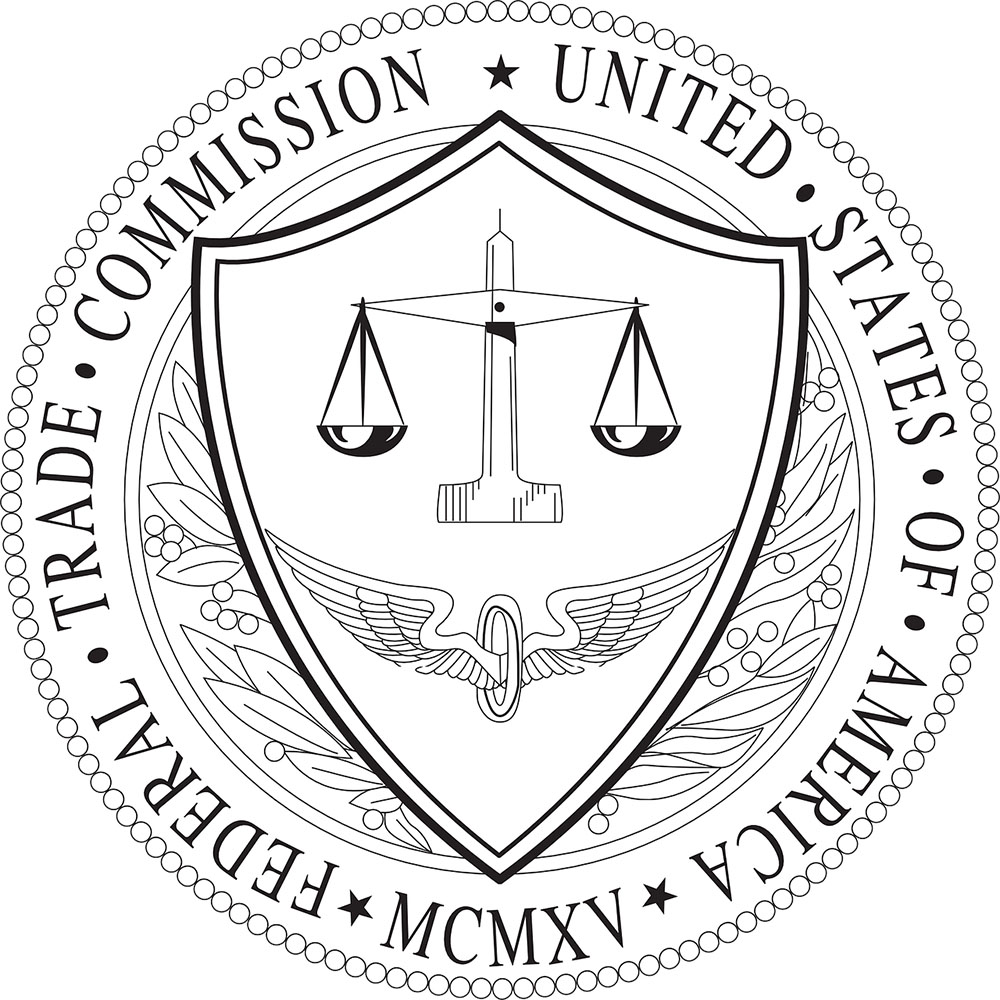11.3: Antitrust Laws
- Page ID
- 10892
\( \newcommand{\vecs}[1]{\overset { \scriptstyle \rightharpoonup} {\mathbf{#1}} } \)
\( \newcommand{\vecd}[1]{\overset{-\!-\!\rightharpoonup}{\vphantom{a}\smash {#1}}} \)
\( \newcommand{\dsum}{\displaystyle\sum\limits} \)
\( \newcommand{\dint}{\displaystyle\int\limits} \)
\( \newcommand{\dlim}{\displaystyle\lim\limits} \)
\( \newcommand{\id}{\mathrm{id}}\) \( \newcommand{\Span}{\mathrm{span}}\)
( \newcommand{\kernel}{\mathrm{null}\,}\) \( \newcommand{\range}{\mathrm{range}\,}\)
\( \newcommand{\RealPart}{\mathrm{Re}}\) \( \newcommand{\ImaginaryPart}{\mathrm{Im}}\)
\( \newcommand{\Argument}{\mathrm{Arg}}\) \( \newcommand{\norm}[1]{\| #1 \|}\)
\( \newcommand{\inner}[2]{\langle #1, #2 \rangle}\)
\( \newcommand{\Span}{\mathrm{span}}\)
\( \newcommand{\id}{\mathrm{id}}\)
\( \newcommand{\Span}{\mathrm{span}}\)
\( \newcommand{\kernel}{\mathrm{null}\,}\)
\( \newcommand{\range}{\mathrm{range}\,}\)
\( \newcommand{\RealPart}{\mathrm{Re}}\)
\( \newcommand{\ImaginaryPart}{\mathrm{Im}}\)
\( \newcommand{\Argument}{\mathrm{Arg}}\)
\( \newcommand{\norm}[1]{\| #1 \|}\)
\( \newcommand{\inner}[2]{\langle #1, #2 \rangle}\)
\( \newcommand{\Span}{\mathrm{span}}\) \( \newcommand{\AA}{\unicode[.8,0]{x212B}}\)
\( \newcommand{\vectorA}[1]{\vec{#1}} % arrow\)
\( \newcommand{\vectorAt}[1]{\vec{\text{#1}}} % arrow\)
\( \newcommand{\vectorB}[1]{\overset { \scriptstyle \rightharpoonup} {\mathbf{#1}} } \)
\( \newcommand{\vectorC}[1]{\textbf{#1}} \)
\( \newcommand{\vectorD}[1]{\overrightarrow{#1}} \)
\( \newcommand{\vectorDt}[1]{\overrightarrow{\text{#1}}} \)
\( \newcommand{\vectE}[1]{\overset{-\!-\!\rightharpoonup}{\vphantom{a}\smash{\mathbf {#1}}}} \)
\( \newcommand{\vecs}[1]{\overset { \scriptstyle \rightharpoonup} {\mathbf{#1}} } \)
\( \newcommand{\vecd}[1]{\overset{-\!-\!\rightharpoonup}{\vphantom{a}\smash {#1}}} \)
\(\newcommand{\avec}{\mathbf a}\) \(\newcommand{\bvec}{\mathbf b}\) \(\newcommand{\cvec}{\mathbf c}\) \(\newcommand{\dvec}{\mathbf d}\) \(\newcommand{\dtil}{\widetilde{\mathbf d}}\) \(\newcommand{\evec}{\mathbf e}\) \(\newcommand{\fvec}{\mathbf f}\) \(\newcommand{\nvec}{\mathbf n}\) \(\newcommand{\pvec}{\mathbf p}\) \(\newcommand{\qvec}{\mathbf q}\) \(\newcommand{\svec}{\mathbf s}\) \(\newcommand{\tvec}{\mathbf t}\) \(\newcommand{\uvec}{\mathbf u}\) \(\newcommand{\vvec}{\mathbf v}\) \(\newcommand{\wvec}{\mathbf w}\) \(\newcommand{\xvec}{\mathbf x}\) \(\newcommand{\yvec}{\mathbf y}\) \(\newcommand{\zvec}{\mathbf z}\) \(\newcommand{\rvec}{\mathbf r}\) \(\newcommand{\mvec}{\mathbf m}\) \(\newcommand{\zerovec}{\mathbf 0}\) \(\newcommand{\onevec}{\mathbf 1}\) \(\newcommand{\real}{\mathbb R}\) \(\newcommand{\twovec}[2]{\left[\begin{array}{r}#1 \\ #2 \end{array}\right]}\) \(\newcommand{\ctwovec}[2]{\left[\begin{array}{c}#1 \\ #2 \end{array}\right]}\) \(\newcommand{\threevec}[3]{\left[\begin{array}{r}#1 \\ #2 \\ #3 \end{array}\right]}\) \(\newcommand{\cthreevec}[3]{\left[\begin{array}{c}#1 \\ #2 \\ #3 \end{array}\right]}\) \(\newcommand{\fourvec}[4]{\left[\begin{array}{r}#1 \\ #2 \\ #3 \\ #4 \end{array}\right]}\) \(\newcommand{\cfourvec}[4]{\left[\begin{array}{c}#1 \\ #2 \\ #3 \\ #4 \end{array}\right]}\) \(\newcommand{\fivevec}[5]{\left[\begin{array}{r}#1 \\ #2 \\ #3 \\ #4 \\ #5 \\ \end{array}\right]}\) \(\newcommand{\cfivevec}[5]{\left[\begin{array}{c}#1 \\ #2 \\ #3 \\ #4 \\ #5 \\ \end{array}\right]}\) \(\newcommand{\mattwo}[4]{\left[\begin{array}{rr}#1 \amp #2 \\ #3 \amp #4 \\ \end{array}\right]}\) \(\newcommand{\laspan}[1]{\text{Span}\{#1\}}\) \(\newcommand{\bcal}{\cal B}\) \(\newcommand{\ccal}{\cal C}\) \(\newcommand{\scal}{\cal S}\) \(\newcommand{\wcal}{\cal W}\) \(\newcommand{\ecal}{\cal E}\) \(\newcommand{\coords}[2]{\left\{#1\right\}_{#2}}\) \(\newcommand{\gray}[1]{\color{gray}{#1}}\) \(\newcommand{\lgray}[1]{\color{lightgray}{#1}}\) \(\newcommand{\rank}{\operatorname{rank}}\) \(\newcommand{\row}{\text{Row}}\) \(\newcommand{\col}{\text{Col}}\) \(\renewcommand{\row}{\text{Row}}\) \(\newcommand{\nul}{\text{Nul}}\) \(\newcommand{\var}{\text{Var}}\) \(\newcommand{\corr}{\text{corr}}\) \(\newcommand{\len}[1]{\left|#1\right|}\) \(\newcommand{\bbar}{\overline{\bvec}}\) \(\newcommand{\bhat}{\widehat{\bvec}}\) \(\newcommand{\bperp}{\bvec^\perp}\) \(\newcommand{\xhat}{\widehat{\xvec}}\) \(\newcommand{\vhat}{\widehat{\vvec}}\) \(\newcommand{\uhat}{\widehat{\uvec}}\) \(\newcommand{\what}{\widehat{\wvec}}\) \(\newcommand{\Sighat}{\widehat{\Sigma}}\) \(\newcommand{\lt}{<}\) \(\newcommand{\gt}{>}\) \(\newcommand{\amp}{&}\) \(\definecolor{fillinmathshade}{gray}{0.9}\)Antitrust legislation was designed to prevent unfair restrictions on trade and to maintain equal opportunity for trade for businesses and consumers alike. Throughout the history of antitrust laws, legislation has become more comprehensive and structured to keep up with the business practices of larger corporations that continue to seek advantages and control through trade practices.
What Do Antitrust Laws Do?
Antitrust laws were created to prevent unlawful mergers and business practices that could lead to restraint of trade by others (Federal Trade Commission, n.d.). The laws themselves are somewhat general to allow the courts the ability to make decisions on these practices, based on changing times and markets (Federal Trade Commission, n.d.). The three main antitrust laws that are in effect have been in effect for over \(100\) years and through many changes in society—from an industrial age to a technological age, and the changing markets they represent. The federal government created and enforces these three main antitrust laws:
- The Sherman Antitrust Act
- The Clayton Act
- The Federal Trade Commission Act
Each state has its own antitrust laws that pertain to trade practices within each separate state, but federal laws are able to reach beyond the states to interstate trade.
The Sherman Antitrust Act
The Sherman Act was passed in 1890 and focused on trade restraints that were considered unreasonable (Federal Trade Commission, n.d.). This Act did not prohibit all forms of trade restraint, since the courts did not see temporary limited restraints as an issue at the time. A partnership agreement that limited trade to certain areas for certain partners was considered acceptable. The courts deemed some trade restrictions as unreasonable, such as price fixing (Federal Trade Commission, n.d.). In some cases, the violation was so apparent that the violation was considered prima facie, or so evident that it automatically satisfied the unreasonable standard (Jurist, 2013).
The Sherman Act prohibits all contracts and interactions that unreasonably restrain foreign trade and trade between states (United States Department of Justice, n.d.). This prohibition does not mean that companies cannot lower prices on goods in an effort to outsell the competition. Doing so would be considered fair competition and trade. However, when a company is able to suppress the ability of others to compete through some intentional unfair business practice, such as forming agreements with competitors to set prices, it is considered a violation.

The Act is a criminal statute, meaning that violation of this Act would result in criminal penalties. Mergers or other actions that would create agreements to fix prices or bids or allocate customers are considered criminal felonies (The United States Department of Justice, n.d.). Violations of the Sherman Act could lead to penalties of up to \(\$100\) million for larger corporations and up to \(\$1\) million for individuals (Federal Trade Commission, n.d.). Those convicted could also face up to \(10\) years in prison. If the amount gained by the conspirators, or the amount lost by the victims of the crime, is over \(\$100\) million, the fine could be increased to twice the amount gained by the conspirators or lost by the victims—whichever is greater (Federal Trade Commission, n.d.).
The Sherman Act did have limitations. It did not provide clear and specific language, which left the courts to make decisions on a case-by-case basis, without any consistent precedent on which to rely (West, n.d.). Precedent occurs as courts make rulings in certain cases, and those rulings are followed in subsequent cases. This lack of precedent left many larger companies in control of their restraint of trade practices, and new legislation seemed necessary.
The Clayton Act
The Clayton Act was passed in 1914. The Clayton Act is a civil statute rather than a criminal statute, meaning that it carries civil penalties rather than prison sentences (United States Department of Justice, n.d.). It primarily focuses on unfair mergers and acquisitions (Jurist, 2013). This Act sought to create more specific language to help the courts reduce unfair trade practices. As such, it established four acts as illegal, but not criminal, meaning that they would be tried as civil matters. The four acts are (West, n.d.):
- Price discrimination, which occurs as the same product is sold to different buyers at different prices
- Exclusive dealing contracts, which require buyers to purchase only from one business and not competitors
- Corporate mergers, which result in the acquisition of competing companies
- Interlocking directorates, which are boards of competing companies with common members sitting on each of the boards
The four acts would only be considered illegal when they create monopolies or substantially lessen competition (West, n.d.). Unions were excluded from mention in the Clayton Act, as Congress did not wish to treat human labor as a commodity (West, n.d.). This Act was still broad enough to rely on the courts for interpretation and decisions on a case-by-case basis.
The Clayton Act was amended in 1976 to require companies planning larger mergers and acquisitions to notify the government in advance and seek authorization (Federal Trade Commission, n.d.). This amendment also provides individuals who are victims of these practices with the ability to sue for triple damages after harm is established (Federal Trade Commission, n.d.).
The Federal Trade Commission Act
The Federal Trade Commission Act (FTC Act), also passed in 1914, focuses on unfair methods of competition and deceptive acts or practices that impact commerce (West, n.d.). All acts that violate the Sherman Act also violate the FTC Act (Federal Trade Commission, n.d.). The FTC Act works to fill in the gaps of the unfair practices by condemning all anticompetitive behaviors not otherwise covered in the other federal antitrust laws (West, n.d.).

The FTC Act is only enforceable by the Federal Trade Commission (FTC), which was created as a result of this Act (Jurist, 2013). The FTC implements the Act’s provisions, and the FTC and the U.S. Department of Justice (DOJ) are the federal agencies responsible for prosecuting violators in either civil or criminal proceedings, depending on the act violated. One remedy that the FTC or DOJ can seek is divestiture, which forces the company to give up one or more of its operating functions (West, n.d.). Another remedy is dissolution, which would terminate the right of a partnership to exist (West, n.d.).
Exemptions
There are limitations on antitrust laws that have been introduced over the years. These include:
- Labor – A labor union can organize and bargain within the bounds of antitrust laws, as long as it does not combine with a nonlabor group.
- Agriculture and Fisheries – Collective co-ops of agricultural groups or fisheries can form, as long as they do not engage in restraint of trade.
- Foreign Trade – Companies can join forces in cooperative activities involving foreign trade exports, as long as trade within the United States is not restrained.
- Cooperative Research and Production – Small businesses can cooperatively work together on research joint ventures.
In essence, exemptions are allowed, as long as they do not act to restrain trade in the United States (West, n.d.). Once restraint of trade becomes a factor, the practices are no longer exemptions and are subject to antitrust laws.
Conclusion
The three main antitrust laws, namely the Sherman Act, the Clayton Act, and the Federal Trade Commission Act, all work to prevent unfair trade practices that can substantially harm free competition. They also work to protect consumers from practices that would control pricing or the ability to buy or engage in services. They prevent companies from taking actions that would allow them to become too big or too powerful, thus controlling how, and what, consumers and other businesses can do.
Contributors and Attributions
-
The OpenStax name, OpenStax logo, OpenStax book covers, OpenStax CNX name, and OpenStax CNX logo are not subject to the creative commons license and may not be reproduced without the prior and express written consent of Rice University. For questions regarding this license, please contact support@openstax.org. Download for free at https://openstax.org/details/books/b...w-i-essentials.

